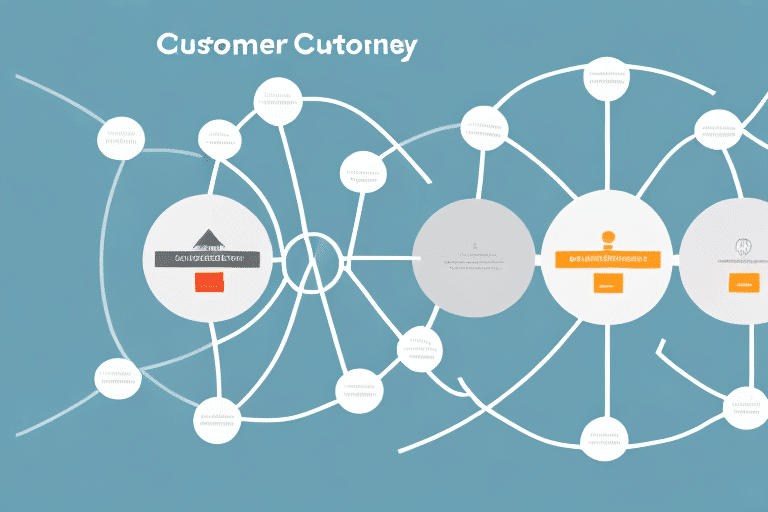Importance of Customer Retention
Customer retention is a critical component of any successful business strategy. It is imperative that companies focus on retaining customers to build long-term relationships and drive revenue growth. Retaining customers is more cost-effective than acquiring new ones, as loyal customers tend to make repeat purchases and are more likely to recommend your business to others. According to a Forbes report, it can cost up to five times more to acquire a new customer than to retain an existing one.
The Benefits of Focusing on Customer Retention
Focusing on customer retention offers numerous advantages:
- Increased Revenue: Loyal customers are more likely to make repeat purchases and invest in higher-priced products or services.
- Cost Savings: Reducing the need for extensive marketing efforts to acquire new customers.
- Brand Advocacy: Satisfied customers often become brand advocates, providing valuable word-of-mouth marketing.
- Stable Revenue Streams: A loyal customer base ensures more predictable and stable revenue.
Additionally, retaining customers helps in building a strong brand reputation. Loyal customers are more likely to leave positive reviews and share their experiences, attracting new customers organically.
Understanding Your Customers
Identifying Customer Needs and Expectations
To retain customers, it's essential to understand their needs and expectations. Utilize customer surveys, feedback forms, and social media monitoring to gather insights. By listening to customer feedback, you can identify areas for improvement and tailor your products or services accordingly.
Leveraging Data Analytics
Data analytics plays a pivotal role in enhancing the customer experience. By analyzing customer behavior and preferences, businesses can:
- Identify trends and patterns in customer interactions.
- Personalize marketing campaigns and product recommendations.
- Optimize pricing strategies based on customer sensitivity.
According to a Harvard Business Review article, companies that effectively use data analytics are better positioned to meet customer needs and improve retention rates.
Enhancing the Customer Experience
Creating a Personalized Experience
Personalization is key to enhancing the customer experience. Tailor your interactions through:
- Email marketing campaigns tailored to specific segments.
- Personalized product recommendations based on purchase history.
- Customized promotions and offers.
Implementing a loyalty program that offers exclusive rewards can foster a sense of community and encourage repeat business.
Providing Exceptional Customer Service
Exceptional customer service is vital for retention. Ensure that your support team is knowledgeable, responsive, and empowered to resolve issues efficiently. Offering support through multiple channels such as phone, email, and social media can cater to customer preferences and enhance satisfaction.
Building Trust through Transparency
Transparency builds trust and fosters long-term relationships. Be upfront about your business practices, including pricing, shipping policies, and product details. Address negative feedback honestly and take proactive steps to rectify issues.
Sharing your company's values and mission can also strengthen customer connections. When customers feel aligned with your brand's purpose, they are more likely to remain loyal.
Communication and Engagement
The Role of Effective Communication
Effective communication is essential for retaining customers. Keep customers informed at every stage, from order confirmations to shipment updates. Promptly respond to inquiries and resolve issues to maintain trust and satisfaction.
Personalized communication, such as addressing customers by name and tailoring messages to their interests, can significantly enhance the customer experience.
Utilizing Technology for Engagement
Technology can enhance customer retention by facilitating better communication and engagement:
- Mobile Apps: Allow customers to make purchases and track orders easily.
- Chatbots: Provide instant support and improve response times.
- Social Media: Engage with customers and build a community around your brand.
Implementing these technologies can streamline interactions and make customers feel more connected to your business.
Measuring and Optimizing Retention Strategies
Tracking Key Metrics
Measuring the success of your customer retention strategies is crucial for continuous improvement. Monitor key metrics such as:
- Retention Rate: The percentage of customers who continue to do business with you over a specific period.
- Customer Lifetime Value (CLV): The total revenue a business can expect from a single customer account.
- Churn Rate: The rate at which customers stop doing business with you.
Regular analysis of these metrics can help identify the effectiveness of your strategies and highlight areas that need adjustment.
Overcoming Retention Challenges
Improving customer retention can present several challenges, including:
- Limited Resources: Allocating sufficient resources to retention efforts.
- Data Management: Effectively collecting and analyzing customer data.
- Customer Engagement: Keeping customers engaged in a competitive market.
Address these challenges by investing in robust data analytics tools, training your team, and continuously refining your engagement strategies.
Best Practices and Additional Strategies
Building Long-Term Relationships
Establishing long-term relationships with customers involves:
- Providing consistent and exceptional customer service.
- Maintaining transparent and honest communication.
- Continuously adapting to meet evolving customer needs.
By focusing on these practices, businesses can foster loyalty and ensure sustained success.
Creating Effective Loyalty Programs
Loyalty programs are an excellent way to reward repeat customers and encourage ongoing engagement. Key elements of successful loyalty programs include:
- Exclusive Rewards: Offer rewards that provide real value to customers.
- Simplicity: Ensure the program is easy to understand and use.
- Personalization: Tailor rewards based on customer preferences and behavior.
Regularly evaluate and adjust your loyalty programs to maximize their effectiveness and align with customer expectations.
Employee Training for Exceptional Service
Employee training is crucial for delivering a great customer experience. Ensure that your team is well-versed in:
- Product knowledge and company policies.
- Effective communication and problem-solving skills.
- Building and maintaining customer relationships.
Well-trained employees are better equipped to provide exceptional service, which directly impacts customer satisfaction and retention.
Conclusion
Enhancing the customer retention experience is a critical component of any successful business strategy. By understanding customer needs, providing personalized and exceptional experiences, maintaining transparent communication, and leveraging technology and data analytics, businesses can build long-term relationships with their customers. Measuring the effectiveness of retention strategies and overcoming common challenges ensures continuous improvement and sustained growth. Ultimately, a commitment to delivering superior customer experiences at every stage of the customer journey is essential for retaining loyal customers and achieving long-term success.




















